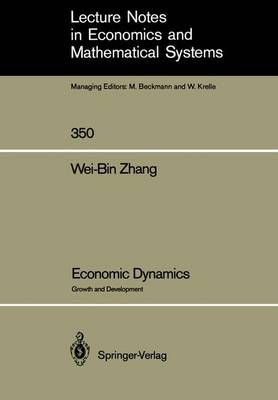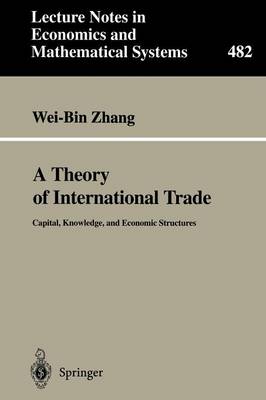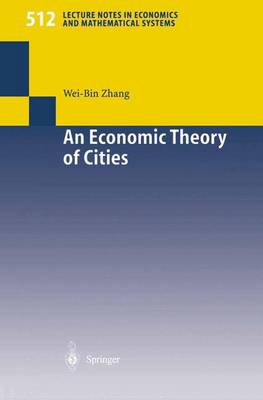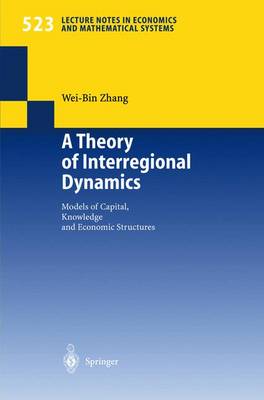Lecture Notes in Economics and Mathematical Systems
4 primary works
Book 350
The theory of economic development is a branch of economic dynamics. Any discussion of the theory must involve dynamics even though not all dynamic problems are necessarily related to economic development. The theory's primary locus is upon the nice paths of economic variables. Stationary states, which have been the main concern of modem economic development theory, are actually special cases of economic dynamics. In this study, we propose an economic development theory within the framework of input-output systems and neoclassical economics. No political problems will be dealt with, although this does not mean that questions such as why Japan had a higher growth rate than China in the past are not important. Similarly, rather than dealing with the psychological and institutional aspects of in economic development processes we only suggest ways (or methods, as Hicks would call them) for analyzing what determines economic development from the point of view of "pure" economics. Our main contribution to economic growth theory is that we investigate various nonlinear dynamic phenomena such as bifurcations and economic cycles. We emphasize that oscillations and structural changes are not rare but universal in a progressive economy. No economic system can be stabilized forever if change is permitted.
Book 482
Over more than two centuries the development ofeconomic theory has created a wide array of different concepts, theories, and insights. My recent book Capital and Knowledge (Zhang, 1999a) shows how separate economic theories such as the Marxian economics, the Keynesian economics, the general equilibrium theory, and the neoclassical growth theory can be examined within a single theoretical framework. The Capital and Knowledge constructs an economic theory to account for the phenomena explained by the main economic theories (of national economies) in a unified manner. It tries to draw together the disparate branches of economics into a single organized system ofknowledge. This book is a part of my economic theory with endogenous population, capital, knowledge, preferences, sexual division of labor and consumption, institutions, economic structures and exchange values over time and space (Zhang, 1996a). As an extension of the Capital and Knowledge, which is focused on the dynamics of national economies, this book is to construct a theory of international trade. We are concerned with dynamic relations between international division of labor, division of consumption and determination of prices structure in global economy. We examine dynamic interdependence between capital accumulation, knowledge creation and utilization, economic growth, price structures and international trade patterns under free competition. Our theory is constructed on the basis of a few concepts within a compact framework.
Book 512
Over more than two centuries the developmentofeconomic theory has created a wide array of different concepts, theories, and insights. My recent books, Capital and Knowledge (Zhang, 1999) and A TheoryofInternational Trade (Zhang, 2000) show how separate economic theories such as the Marxian economics, the Keynesian economics, the general equilibrium theory, the neoclassical growth theory, and the neoclassical trade theory can be examined within a single theoretical framework. This book isto further expand the frameworkproposed in the previous studies. This book is a part of my economic theory with endogenous population, capital, knowledge, preferences, sexual division of labor and consumption, institutions, economic structures and exchange values over time and space (Zhang, 1996a). As an extension of the Capital and Knowledge, which is focused on the dynamics of national economies, this book is to construct a theory of urban economies. We are concerned with dynamic relations between division of labor, division ofconsumption and determination of prices structure over space. We examine dynamic interdependence between capital accumulation, knowledge creation and utilization, economicgrowth, price structuresand urban pattern formation under free competition. The theory is constructed on the basisofa few concepts within a compact framework. The comparative advantage of our theory is that in providing rich insights into complex of spatial economies it uses only a few concepts and simplified functional forms and accepts a few assumptions about behavior of consumers, producers, and institutionalstructures.
Book 523
Over more than two centuries the development of economic theory has created a wide array of different theories, concepts and results. Nevertheless, there is no general theory, which mrifies these varied theories into a comprehensive one. Economics has been split between partial and conflicting representations of the functioning of market economies. We have a collection of separate theories such as the Marxian economics, the Keynesian economics, the general equilibrium theory, and the neoclassical growth theory. These diverse economic theories have co-existed but not in a structured relationship with each other. Economic students are trained to understand economic phenomena by severally incompatible theories one by one in the same course. Since the end of Second Wodd War many crises in economic theory have been announced. The economist experienced the crisis of the general equilibrium economics, the crisis of the neoclassical growth economics, the crisis of the Keynesian economics, not to mention the crises of the Marxian economics. It is quite reasonable to expect the loss of confidence in theoretical economics even among professional economists after so many crises in a very short period of time. But a crisis offers new opportmrities for change, either for better or for worse. The past crises in theoretical economics may be perceived as a historical opportmrity to construct a general economic theory by which the traditional theories are integrated into a higher whole.



